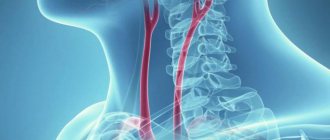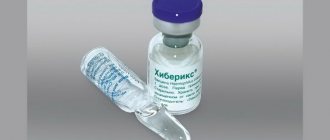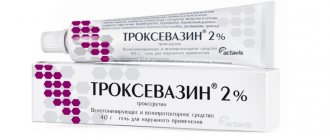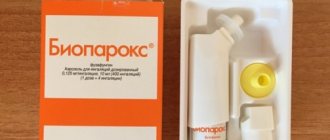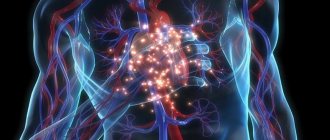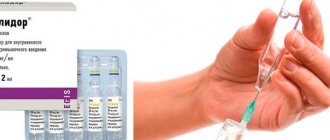The list of symptoms characteristic of coronavirus gradually continues to be supplemented with new ones. In addition to the most common ones, researchers have discovered very new and specific symptoms that indicate the possibility of contracting an infection.
Most people hope that they have already had a mild form of the virus and are asymptomatic, without knowing it. At the beginning of spring, about 12% of such cases were recorded on the territory of the Russian Federation. By mid-spring, the number of asymptomatic people had doubled. They have no chance to establish an accurate diagnosis themselves. But there is still a chance that if the disease is mild, you may discover that you have Covid.
Classification of infectious diseases
Infectious diseases are distinguished according to many “parameters”. A. Depending on the location of the infection, these diseases are: - intestinal (typhoid fever, salmonellosis, escherichiosis, dysentery, cholera, foodborne toxic infections...); — pulmonary (infectious diseases of the respiratory tract: influenza, ARVI, chickenpox, respiratory infections, measles...); — vector-borne (infectious blood diseases: HIV, typhoid, plague, malaria...); - diseases of the external integument (anthrax, tetanus). B. According to the type of pathogen, human infectious diseases are: - viral (cytomegalovirus infection, viral hepatitis, HIV, influenza, measles, meningitis...); - prion (caused by protein infectious agents: Creutzfeldt-Jakob disease, kuru...); — protozoans (caused by protozoan infectious agents: amoebiosis, balantidiasis, malaria, isosporiasis...); - bacterial (meningitis, dysentery, salmonellosis, plague, cholera...); - mycoses (caused by fungal infectious agents: chromomycosis, candidiasis, athlete's foot, cryptococcosis...). B. Infectious diseases are also divided into: - Zoonotic. They are characterized by the ability of a pathogen related to animal diseases to infect the human body. Such infectious diseases, for example, include: anthrax and rabies, brucellosis and foot-and-mouth disease, listeriosis and tularemia... - Anthroponotic. These infectious diseases affect only the human body, for example, diphtheria, typhus, measles, smallpox, cholera... - Invasive or parasitic. Caused by parasites: mites, protozoa, insects. D. Particularly dangerous diseases, which are called quarantine diseases, are included in a separate group of infectious diseases. This group is characterized by a short incubation period, a high rate of spread, a severe course and a high percentage of deaths. The World Health Organization classified this group of infectious diseases as: cholera, Ebola, plague, smallpox, some types of influenza, and yellow fever.
Congenital myotonia
A genetic mutation in myotonia congenita disrupts the functioning of skeletal muscle chloride channels. As a result, a person gets the so-called “goat faint” - voluntary freezing or relaxation of the muscles. This feature can manifest itself both as a result of strong emotions and for no apparent reason. Freezing can affect both individual muscle groups and all muscles. Studying the manifestations and nature of the disease allows doctors to temporarily stop fairly severe attacks. We can talk a lot about eliminating symptoms, but a complete treatment for this mutation still does not exist.
Causes of infectious diseases
The cause of all infectious diseases is a pathogenic microorganism, which, when entering the body, initiates infectious processes. As usual, every disease of this nature has “its own” pathogen, although there are exceptions, for example, sepsis occurs as a result of exposure to several pathogens on the body, and streptococcus can cause several diseases (scarlet fever, tonsillitis, erysipelas). The bodies of different people react differently to the invasion of foreign agents: some are practically immune to them, while others, on the contrary, immediately begin to react sharply to this, showing various symptoms of an infectious disease. This happens because the body’s defenses differ among people. Defense forces characterize the state of the immune system. And therefore we can say that the main cause of infectious diseases is suboptimal functionality of the immune system. If the immune system is weak, then the body does not “have enough strength” to fight pathogenic microorganisms - this human condition is called immunodeficiency. It happens that the immune system is inappropriately active and begins to perceive the tissues of its own body as foreign and attacks them - this condition is called autoimmune.
Causative agents of infectious diseases
— Viruses. Translated from Latin it means “poison”. They are able to reproduce only inside living cells, where they strive to penetrate. - Bacteria. The vast majority are unicellular microorganisms. - The simplest. Single-celled microorganisms that can perform some functions characteristic of individual tissues and organs of more highly developed forms. — Mycoplasmas (fungi). They differ from other single-celled organisms in that they do not have a membrane and can initiate infectious processes while outside the cells. - Spirochetes. At their core, they are bacteria that have a characteristic spiral shape. - Chlamydia, rickettsia. Intracellularly functioning microorganisms, inherently occupying an intermediate position between viruses and bacteria. The degree of possibility of an infectious disease occurring in a person depends on the ability of his immune system to give an adequate response to the invasion of any of these foreign elements, recognize it and neutralize it.
Progressive lipodystrophy
Rare human genetic diseases often baffle scientists. This happened with progressive lipodystrophy. Due to the mutation of individual genes, the carrier suffers from rapid destruction of subcutaneous adipose tissue. As a result, the skin begins to sag and wrinkles appear on it.
A person suffering from lipodystrophy looks much older than his age. Most often, women are affected by this change, but several cases have been recorded in men. Interestingly, medicine has not yet identified the cause of this deviation.
If we talk about treatment, then in the case of progressive lipodystrophy it can only be symptomatic. Doctors will help relieve skin soreness and use cosmetics to give you a facelift. But this approach only helps temporarily.
Infectious diseases: symptoms
The symptoms of these diseases are so diverse that, despite their pronounced severity, it is often very difficult to determine its type, and this is connected with the choice of treatment method. Modern medicine knows more than 5,000 infectious diseases and about 1,500 of their symptoms. This suggests that the same symptoms appear in many diseases - such symptoms are called general or nonspecific. Here they are: - increased body temperature; - general weakness of the body; - loss of appetite; - chills; - sleep disturbance; - muscle pain; - aches in the joints; - nausea and vomiting; - increased sweating; - dizziness; - severe headaches; - apathy... But pathognomonic symptoms are of particular value in diagnosing infectious diseases - signs that are characteristic only of one form of infectious pathology. Here are some examples of such symptoms: - Volsky-Filatov-Koplik spots on the oral mucosa are characteristic only of measles; - whooping cough is characterized by a special cough - convulsive with reprises; - opisthotonus (arching of the back) is a characteristic symptom of tetanus; - hydrophobia is a hallmark of rabies; — meningococcal infection can be diagnosed with 100% certainty by the presence of a visculous rash along the nerve trunks... Pathognomonic symptoms are known for most infectious diseases and every infectious disease doctor must know the most common of them. Among other things, there is a group of symptoms that occupies an intermediate position between general and pathognomonic symptoms. These symptoms can occur not only in infectious diseases, but also in others. For example, an increased size of the liver is characteristic of both viral hepatitis and cirrhosis of the liver, heart failure, malaria, typhoid fever..., an increased size of the spleen is found in typhoid fever, sepsis, malaria, viral hepatitis... That is why any infectious diseases of people are diagnosed with combination of many signs with the use of many methods of analysis and instrumental diagnostics, because, we repeat, the choice of treatment method for the disease depends on this, and, accordingly, the success of this.
Progeria
Many times accelerated aging of the body, tremors and atherosclerosis at the age of 5-6 years. These are the consequences of progeria or Hutchinson-Gilfird syndrome. A mutation of the gene responsible for normal cell division leads to the fact that a child at a very young age receives the body of an old man with all the unpleasant diseases of old age.
This disease is diagnosed at the age of approximately 2 years. It is characterized by:
- Noticeable growth retardation. There may also be very late teething.
- Physical signs of aging. Such as loose skin, baldness, poor joint function.
- Anomaly of the craniofacial bones. Disproportion towards increasing the upper part of the cranial bones.
Progeria is currently an incurable defect, and people who suffer from it very rarely survive to adulthood. Doctors are conducting an in-depth study of this deviation, hoping to find an answer to how to prevent the altered gene from taking the lives of children.
Diagnosis of infectious diseases in humans
To diagnose infectious diseases, both anamnesis (questioning the patient) and laboratory and instrumental methods are used: - bacteriological; — serological; - virological; — parasitological; - immunofluorescent. After interviewing the patient and preliminary conclusions, the material is taken for analysis, which is determined by the doctor. This material can be: blood (most often), urine, feces, cerebrospinal fluid, sputum, smears from mucous membranes, vomit, biopsies and punctures of organs... Recently, enzyme-linked immunosorbent assay has become widespread for the diagnosis of infectious diseases. Most diagnostic methods are aimed at determining the type of pathogen, or the presence and belonging of antibodies to certain classes of immune components, which makes it possible to differentiate various infectious diseases. Also, to diagnose these diseases, skin tests with allergens introduced into them are often used to provoke appropriate reactions.
Microcephaly
Microcephaly is caused by a genetic defect that prevents the bones of a child’s skull from fully developing. As a result, the head of a person suffering from this disease is significantly smaller than normal. This leads to constant headaches, irritability or, conversely, apathy. The mental and physical development of a patient with microcephaly lags significantly behind the norm. Treatment of a genetic mutation is aimed at enhanced intellectual development. Such a child needs to be dealt with separately in various speech therapy and physiotherapy centers. In most cases, it is possible to sufficiently socially adapt a person to life in society.
Treatment of infectious diseases in humans
Currently, there is a huge number of different medications that are intended to treat various infectious diseases of people, and it is impossible to list them all... and there is no need for this. Many famous scientists currently have a very ambiguous attitude, for example, towards antibiotics, while others have a very ambiguous attitude towards other drugs. Firstly, any drug has certain contraindications and causes some side effects, and this is their main drawback. Secondly, medications, the action of which is aimed at neutralizing foreign agents, in fact, have the effect of “catching” another disease, or even a whole “bouquet” of them. Thirdly, taking medications (especially antibiotics) gradually destroys the microflora of the stomach - the most important part of the human immune system, and this has very unpredictable consequences. That is why the treatment of infectious diseases must be carried out simultaneously with the intake of probiotics and prebiotics, which are 100% natural. Treatment of infectious diseases in humans involves the use of the following drugs: - antibacterial (chemo- and antibiotic therapy); - gamma or immunoglobulins (serotherapy); — interferons; — bacteriophages (phage therapy); — vaccines (vaccine therapy); - blood products (hemotherapy)... Today a new paradigm in the treatment of infectious diseases has matured: scientists have come to the conclusion that it is more important to support the immune system (IS) in its fight against foreign agents, rather than directly influencing these agents, although in severe cases , of course, there is no time to restore the optimal functionality of the IS. It is for this reason that complex therapy for these pathologies is necessary, in which, along with traditional drugs, it is necessary to use immunomodulators and immunostimulants. Many of these drugs: - neutralize the side effects caused by drugs; - strengthens the body's immunity; - enhances the therapeutic effect of the medications used; - quickly restores the body.
Hypertrichosis
The human body is almost completely covered with hair, and this is considered the absolute norm. In some places it is a barely noticeable fluff, in others it is quite hard and thick shaft hair. A genetic disorder called hypertrichosis causes intense hair growth in areas where it is not intended by nature.
There are several types of this deviation:
- Congenital vellus hypertrichosis, when hair does not change after birth, but continues to grow.
- Acquired vellus hypertrichosis. In this case, it is not vellus or terminal hairs that grow from hair follicles, but germinal hairs.
- Drug-induced hypertrichosis, when hair growth is activated under the influence of certain drugs.
- Symptomatic hypertrichosis. Hair grows as a result of certain diseases.
- Traumatic hypertrichosis. Increased hair growth is observed at the site of scars and scars.
This genetic disorder is treatable in trichological cents. It is worth remembering that self-removal of unwanted hair only leads to increased growth. The treatment is comprehensive, using several effective methods.
Infectious diseases: prevention
Preventive measures to prevent infectious diseases have been known for a long time and in the Soviet period they were called: “Healthy lifestyle”. Since then, they have not lost their relevance, and we will remind you of them here. 1. First of all, infectious diseases depend on the normal functionality of the immune system, the state of which, in turn, depends on normal nutrition. Therefore, rule No. 1 - eat right: do not overeat, eat less animal fats, include more fresh fruits and vegetables in your diet, eat fried foods as little as possible, eat more often, but in smaller quantities... 2. Infectious diseases can be prevented by the systematic use of immune drugs : immunomodulators and immunostimulants (this is the second most important rule). 3. Strengthen your immune system by systematically consuming herbal products such as onions, garlic, honey, lemon juice (not in pure form), raspberries, sea buckthorn, ginger... 4. Lead an active lifestyle: do exercises in the morning, go to the gym or pool, run in the evenings... 5. Infectious diseases are not scary for a hardened body, so do some hardening (a bath and a contrast shower are the best means for these purposes). 6. Give up bad habits: quit smoking and drinking alcohol. 7. Avoid stressful situations and do not succumb to depression, nothing suppresses the immune system more than our nervous breakdowns, so become an optimist and understand that there is nothing more important in this life than your health. 8. Learn to rest properly. Constantly watching television and “relaxing” on the couch is not relaxation. Real rest should be active and necessarily include alternation of physical and mental stress. These are simple rules that should become a way of life for every person, and then we guarantee you: no infectious diseases will pose absolutely any danger to you.
Xeroderma pigmentosum
A rather severe hereditary disease, which is characterized by abnormal sensitivity of the skin to UV rays. Xeroderma pigmentosum entails various inflammatory processes of the skin and the formation of cancer cells. Often the presence of this gene mutation leads to death, so constant medical supervision is extremely important.
For those suffering from this disease, the sun's rays are truly deadly. Symptoms include redness and blistering in areas of the skin exposed to sunlight. Often deviation entails photography and photophobia. There is still no cure for xeroderma pigmentosum. But if all precautions are taken, it is quite possible to live quite a long time.
Choose the care your relative needs
For patients after a stroke
For patients after a stroke
A person after a stroke becomes practically helpless, especially if he is elderly. Elderly people are much more difficult to tolerate this disease. Patients after a stroke need quality care and, in addition, rehabilitation, which will partially or even completely restore lost functions. Many relatives cannot cope with elderly people due to lack of time or other reasons.
Price from 1,700 rub.
More details Leave a request
For bedridden patients
For bedridden patients
In the boarding house for the elderly “Zabota”, comfortable conditions are organized for each bedridden patient. The wards are guaranteed quality care and assistance. Our charges are under constant supervision. We provide care for bedridden patients after a stroke, hip fracture and other diseases and help them get back on their feet.
Price from 1,700 rub.
More details Leave a request
For Alzheimer's patients
For Alzheimer's patients
In the initial stages, an Alzheimer's patient is almost impossible to distinguish from an ordinary person. His memory loss is not critical and occurs in periods. But over time, the disease progresses. Alzheimer's patients are characterized by indifference to reality, the inability to retain any events in memory, and loss of mobility. His immunity weakens, and diaper rash and bedsores may develop. Caring for such patients, and especially rehabilitation, is the task of professionals. In this case, it is difficult to do without the services of a specialized boarding house and qualified personnel with medical education.
Price from 1,550 rub.
More details Leave a request
For invalids
For invalids
Caring for a person with disabilities is quite difficult. Due to various reasons and busy schedules, the patient’s relatives have neither the strength nor the time to provide quality care to an elderly disabled person. It is in such cases that boarding houses for elderly disabled people of the “Zabota” network, located outside of Moscow in ecologically clean areas of the Moscow region, come to the rescue.
Price from 1,550 rub.
More details Leave a request
For seniors with dementia
For seniors with dementia
When choosing a room and rehabilitation program for patients, we focus on their individual characteristics, as well as their emotional and physical state. The program includes classes aimed at building new neural connections in the brain. These are exercises for the development of fine motor skills, breathing exercises, repetition of once familiar songs, stories, educational games, classes with a psychologist, etc.
Price from 1,500 rub.
More details Leave a request
Elderly care
Elderly care
When registering a relative in a specialized boarding house due to various circumstances, you can be completely sure that he will be surrounded by care. We provide comprehensive care for the elderly, which significantly improves the quality of life.
Price from 1,400 rub.
More details Leave a request
For Parkinson's patients
For Parkinson's patients
The network of boarding houses "ZABOTA" offers care for elderly people suffering from Parkinson's disease.
Price from 1,550 rub.
More details Leave a request
For patients after a heart attack
For patients after a heart attack
Professional care for patients after a heart attack in boarding houses of the “ZABOTA” network is carried out under the constant supervision of a general practitioner and a geriatrician. Rehabilitation measures allow you to gradually, in several stages, return the patient to his previous physical activity. Myocardial infarction is a condition that occurs as a result of a sudden cessation of coronary blood flow due to thrombosis of a coronary vessel and the development of foci of necrosis in the heart muscle. The cerebral version of myocardial infarction resembles a stroke, since its symptoms also include confusion and speech.
Price from 1,550 rub.
More details Leave a request
For patients with diabetes
For patients with diabetes
The blood sugar level of a diabetic patient also depends on his daily diet. Therefore, the food in the network of boarding houses “Zabota” is dietary - developed by nutritionists taking into account the characteristics of the human body in old age. Contrary to the erroneously established opinion about nursing homes, the food in our boarding houses is not only healthy, but also delicious. The menu is not repeated for 21 days. Our guests' diet includes seasonal vegetables and fruits every day.
Price from 1,500 rub.
More details Leave a request
Recovery after a hip fracture
Recovery after a hip fracture
One of the most common injuries in old age is a hip fracture. After a hip fracture, a person loses the ability to move independently. Private boarding houses "ZABOTA" set themselves the task of not only getting our guests back on their feet after a hip fracture, but also returning them to the previous full-fledged lifestyle that they led before the fracture. Statistics have shown that about 70% of older people can move independently within two to three weeks, and after six months they completely return to their normal lifestyle.
Price from 1,600 rub.
More details Leave a request
Heart failure
In older people, symptoms are practically absent, and weakness, dizziness, decreased visual acuity and impaired motor function are attributed to old age. With increased physical activity, a person experiences shortness of breath and palpitations. In this state, you cannot postpone a visit to the therapist.
Atrial fibrillation
In a healthy person, the contraction and relaxation phases of the heart alternate at a certain rhythm (from 60 to 90 times per minute). And deviations in one direction or another from these indicators indicate a serious disorder. Unfortunately, the initial stage very quickly turns into a permanent form, where the arrhythmia continues for more than seven days. And without correct treatment, the patient dies.
Harlequin ichthyosis
For the most part, very rare human diseases resulting from hereditary mutations do not pose any particular threat to life. However, among the truly dangerous deviations, harlequin ichthyosis takes almost the first place. In general, ichthyosis is a metabolic disorder in the body, as a result of which the skin becomes rough and covered with scales.
The rarest genetic disorder is characterized by very thick skin covered with cracks. At the same time, the eyelids and mouth are also susceptible to abnormal changes. Caring for an infant with this disease involves constant bathing and moisturizing the skin. But even with the most careful care, children with harlequin ichthyosis live only a few months. Only in 2% of cases do patients manage to survive for up to 10-12 years. Doctors still have not determined whether there can be an effective treatment for this ichthyosis.
Preventive actions of the main diseases of elderly women and men (men)
If you want your relatives to live happily in old age, then pay more attention to them. Do not let illnesses reach a chronic stage; try to follow doctors’ recommendations for treatment and prevention.
Warnings of mental pathologies
To prevent the development of dementia, you need to be calm about stress and troubles. In addition, we recommend:
- Healthy food;
- engage in feasible physical labor, which leads to emotional release;
- swim, jog, do morning exercises;
- consume vitamins E and A;
- take sedatives;
- Eliminate foods high in sugar and caffeine from your diet.
How to prevent troubles associated with the heart and blood vessels
The development of atherosclerosis, ischemia, hypertension, and heart attack can be avoided if you achieve good blood supply. For this you need:
- change your diet. Your table should include porridge made from coarse grains, lean turkey, rabbit or chicken. Don't forget about freshly squeezed juices, vegetables and herbs;
- fast from time to time. This will help get rid of cholesterol plaques;
- Get a massage at least twice a year.
What heart problems are most common in older people?
Unfortunately, doctors state that in our country citizens die from diseases of the cardiovascular system twice as often as from other ailments. Let's consider the most dangerous pathologies.
Arterial hypertension
It develops in women over 55 years of age and in men who are 60-65. A dangerous signal is that when measuring blood pressure, the tonometer shows values above 90 per 145 units of mercury. Reasons for appearance:
- hereditary factor;
- excess weight;
- bad habits (alcohol and tobacco consumption);
- high blood cholesterol levels;
- inactive lifestyle;
- stress;
- damage to blood vessels and arteries by atherosclerotic plaques.
Hypertension
Characterized by a strong difference between systolic and diastolic pressure. The patient does not feel any signs of the disease; sometimes there is tinnitus, headache, increased heart rate, and nausea. But these symptoms are attributed to age and therefore rarely consult a doctor. Diagnosis is carried out at a later date. Therefore, the risk of having a stroke or dying greatly increases.
Angina pectoris
Painful sensations behind the sternum occur with increased physical or emotional stress. This happens because during work or stress, the heart does not receive enough oxygen. Patients with this diagnosis always relieve pain with nitroglycerin. But in medical practice there is unstable angina, which manifests itself at night and is a harbinger of a heart attack. In such a situation, urgent hospitalization is necessary to avoid death.
Asthma is one of the age-related diseases of elderly and senile people.
Accompanied by attacks of shortness of breath, sometimes turning into suffocation, lasting from several minutes to 2-3 hours. The patient, as a rule, is tormented exclusively at night by a dry cough (sometimes with the release of light sputum), he lacks oxygen. In addition, symptoms are aggravated by feelings of fear of death. He finds relief if he goes to an open window or is in a sitting position with his feet on the floor.
There is pallor of the skin, blue lips and nail phalanges, and the face is covered with perspiration. Often asthma precedes the development of cardiogenic pulmonary edema. Before the ambulance arrives, first aid must be provided. Place the patient in a chair, immerse the feet and legs in hot water. If possible, give an intramuscular injection of morphine, intravenous furosemide and oxygen inhalation.
